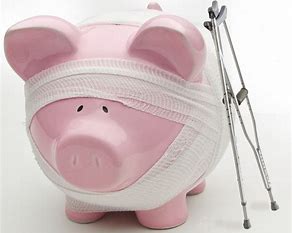Anyone who saw the news this weekend saw the incredible act of generosity by billionaire philanthropist Robert F. Smith, the commencement speaker at Morehouse College, in Atlanta. Mr. Smith paid the student loan debt of the 2019 graduating class- a total grant of about $40 million dollars. For most graduates, however, student loans will follow them long after the diploma is received.
Many students are on the “Student Deferment” program for their loans, but after graduation, payments begin in six months. What do they do next?First and foremost, students must have a plan. They must have a budget. Then three steps: 1. get to paying as soon as possible on a repayment plan, 2. get out of the student deferment before it statutorily ends and, 3. stay out of forbearance in the future. Going into and out of forbearance is the fastest way to grow a student loan balance. Why? Because the interest capitalizes every time the loans go into and out of forbearance, and when students change payment plans. Capitalization means that the outstanding interest becomes a part of the principal balance, and you then pay interest on the new principal. This is a reason that student loan balances balloon.
The first issue, that few borrowers truly understand, is that during student deferment unsubsidized student loan interest already capitalizes quarterly for the length of the deferment. Four years of loans every semester, unsubsidized interest amounts capitalizing every quarter. This is why students graduate with thousands of dollars of student loan debt amounts over what they actually borrowed. So, during school, these loans are growing. After graduation, many students are faced with large payments they cannot afford on the “Standard Repayment Plan” over ten years, so they immediately put the loans into “forbearance” and a payment is no longer due. But once again that unpaid interest will capitalize every time the loan goes into and out of forbearance.
So, what to do? Here are a few first steps.
1. Have a budget and include in the budget the biggest student loan payment you can afford. Things may be “tight” again for a little while but getting right into payments and staying out of forbearance will make loan payoffs faster and less expensive.
2. Download the Student Loan Guide, “Do You Have the  Right Student Loan Payment” from my website and follow the steps to retrieve your total federal student loan data from the National Student Loan Database (NSLDS). From there, check your loans CARFEULLY, to make sure they are, in fact, yours. Look at the disbursement dates, and make sure you were attending. Mistakes sometimes happen.
Right Student Loan Payment” from my website and follow the steps to retrieve your total federal student loan data from the National Student Loan Database (NSLDS). From there, check your loans CARFEULLY, to make sure they are, in fact, yours. Look at the disbursement dates, and make sure you were attending. Mistakes sometimes happen.
3. Use the Debt Snowball for the individual loans. If you can avoid consolidation, you can stack your loans from lowest total amount to highest, and attack the debt using a “debt snowball.” As each loan is paid, you will have a huge sense of accomplishment, and the motivation to keep going.
4. Avoid Forbearance. If you cannot make any payment at all AFTER your student deferment period ends- call your servicer and get into a payment plan, do NOT go into forbearance. If you graduate this month, you have a few months before the first payment is due. Get moving on these, but if there is an unavoidable reason you just cannot make the payment, get into Income Driven Repayment, or some other plan, and make sure you absolutely re-certify every year. When you go into and come out of IDR, guess what? Your interest capitalizes.
In my humble opinion, it is this interest capitalization that is making student loans hard to pay off. And when people enter into forbearance, it is because there is a short-term issue causing a hardship or some other issue. The servicers will happily put you into forbearance, “so you don’t have a payment due for six months” but in the long run, it actually hurts the borrower financially. We need stronger disclosures.
Best of luck to the class of 2019! May you find your joy and excitement felt during “Pomp and Circumstance” lasts for years as you leave college and embark on the rest of your journey!

image credit: gocollege.com
 We all tend to have several places we spend money without really counting the cost. Once we really pay attention to our money and write down where it goes often we are surprised on how much “runs away” after the bills are paid. So, for the savings challenge, there are three basic steps that if you commit to for 30 days, you will surprise yourself by how much you get to keep in your pocket.
We all tend to have several places we spend money without really counting the cost. Once we really pay attention to our money and write down where it goes often we are surprised on how much “runs away” after the bills are paid. So, for the savings challenge, there are three basic steps that if you commit to for 30 days, you will surprise yourself by how much you get to keep in your pocket.

 source: imtresidential.com
source: imtresidential.com
